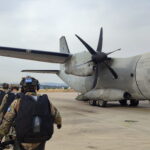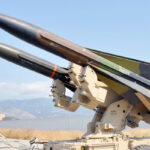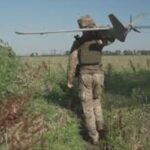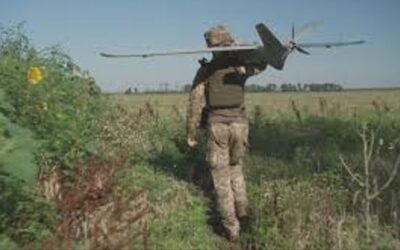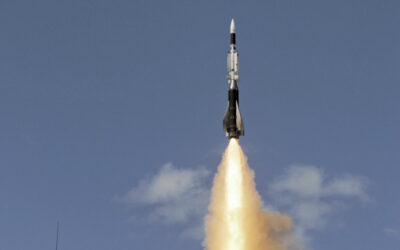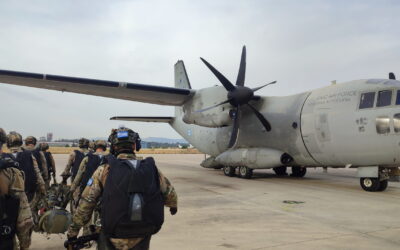Kiev is increasing spending by 15.5 billion hryvnias (367 million euros) to bolster Ukraine’s armed forces with drones, according to…
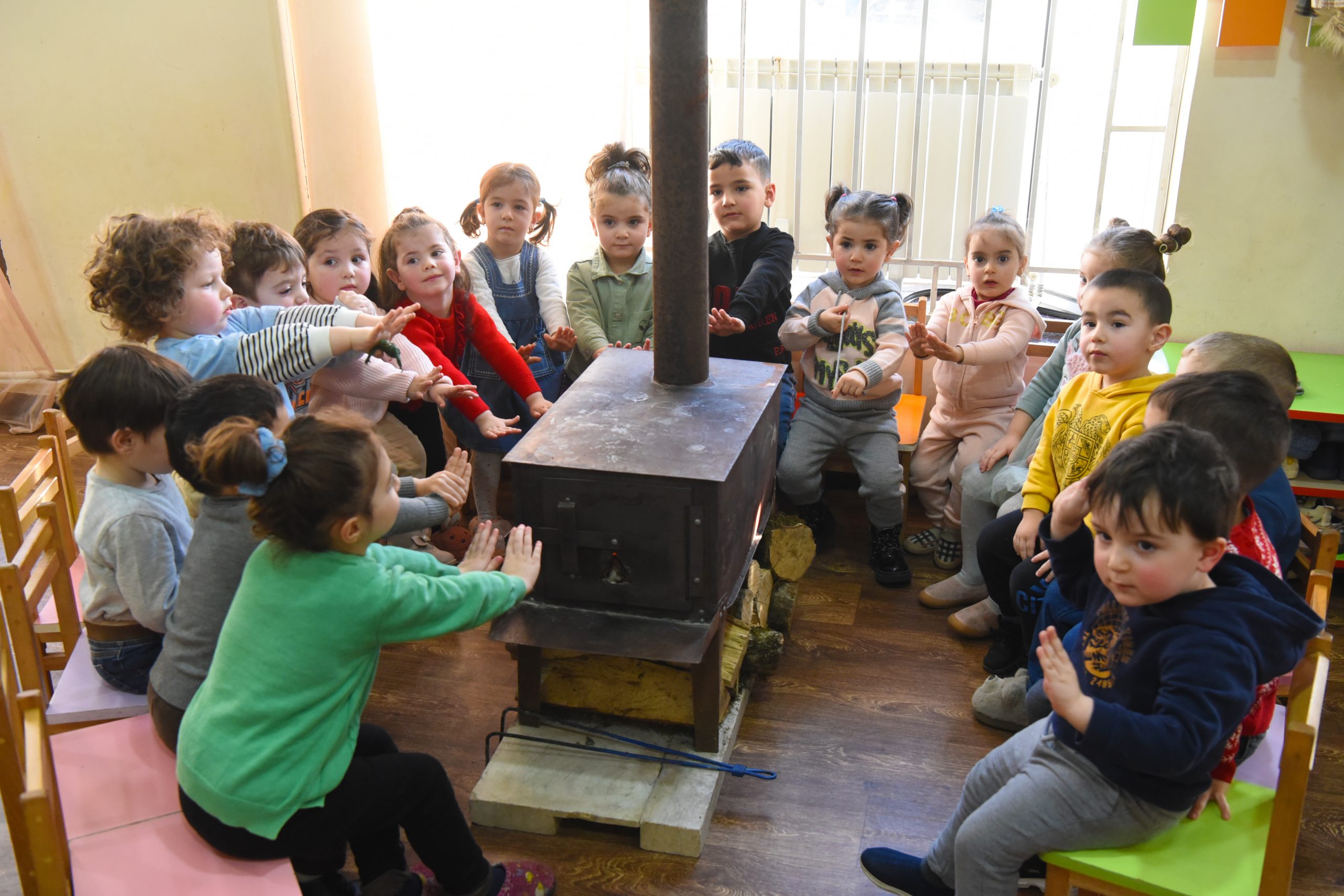
*Andreas Pogiatzis
Upon hearing the term ‘ethnic cleansing’, one will often think of scenes from different eras, with pogroms, mass executions and displacement of populations. Our mind immediately links this definition to something that happened in the past and cannot happen again. To something no nation in the modern world could do and get away with.
However, what the Armenians are experiencing today in the autonomous enclave of Nagorno-Karabakh, in the unrecognized Republic of Artsakh, is precisely ethnic cleansing, not according to the scriptures, but rather the evidence cited in this text.
For the record, the Republic of Artsakh is a unilaterally declared, unrecognized republic in the South Caucasus. Based on the rules of International Law, as well as the official UN maps, the region is part of Azerbaijan, but it is inhabited by a predominantly Armenian population.
The name Karabakh first appears in Georgian and Persian sources of the 13th and 14th centuries and refers to an Armenian principality known to modern historians as the Kingdom of Artsakh or Knachen. The Greek geographer Strabo (63 BC – 23 AD) named the region Orchistheni (Orchisthena, that is, Artsakh) and it was considered a region of Armenia. Strabo mentions in his writings all the Armenian kings who ruled up to 189 BC, without a single reference, nonetheless, to Orhisthena. According to him, the region had been inhabited before the presence of the Armenian Empire, however, the ancient inhabitants of Nagorno-Karabakh spoke a dialect of the Armenian language.
During the Soviet hegemony, in 1923, the Nagorno-Karabakh Autonomous Region (oblast) was established within the borders of the Azerbaijan Soviet Socialist Republic.
In 1991 and immediately after the fall of the USSR, the region became a point of contention between Armenia and Azerbaijan, while in the same year, a referendum was held leading to the declaration of the independence of the Republic of Artsakh.
Conflicts between the two countries continued until 1994 and ended with a ceasefire, which shaped the borders in place until 2020 when the second war (the 44-day war) broke out in the region, with the Armenians suffering a major defeat and heavy casualties.
Prior to the 2020 war, the Republic of Artsakh controlled much of the former Nagorno-Karabakh autonomous region of the USSR and also shared a border with Armenia to the west. Much of these territories (about 70%) were given to Azerbaijan after a ceasefire agreement in December 2020, following the defeat of the Artsakh Defence Forces after the 44-day war.
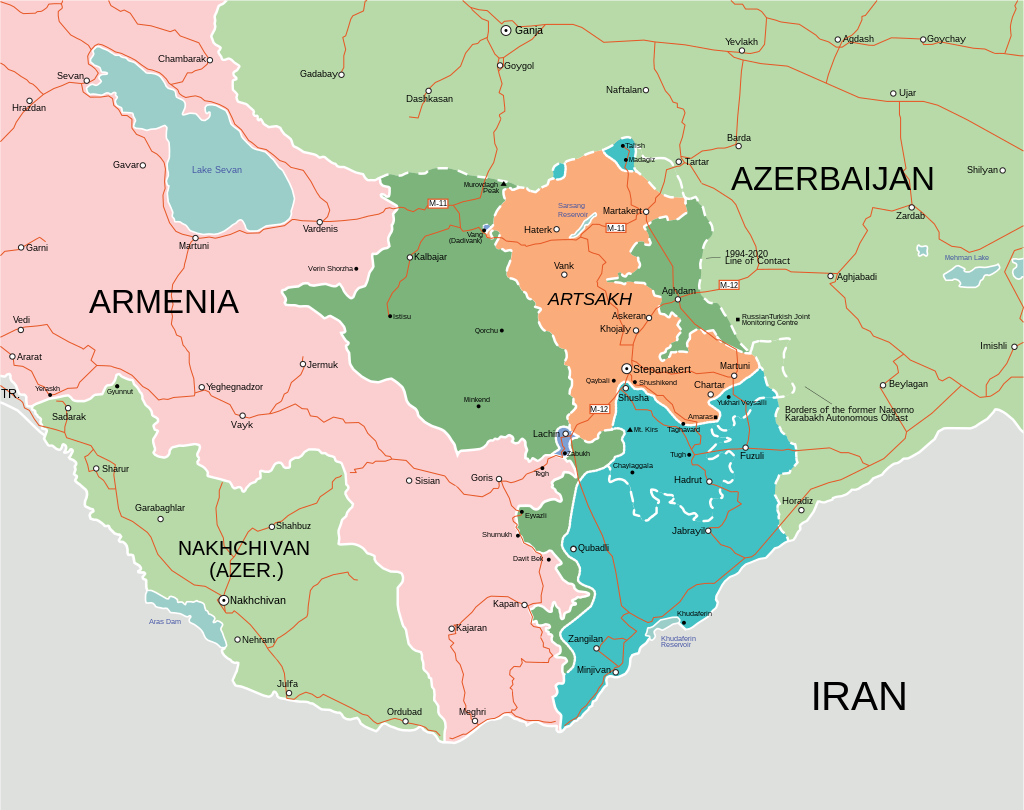 The remaining territories of the Republic of Artsakh after the 44-day war. Areas under Armenian control appear in orange.
The remaining territories of the Republic of Artsakh after the 44-day war. Areas under Armenian control appear in orange.
The aftermath
The 2020 war was devastating in many aspects for the local Armenian population, while much of the new generation of the country was killed during the fighting. According to official data, during the war the Armenians suffered 3,825 casualties (soldiers), 187 missing, 11 thousand wounded and 60 prisoners, out of Artsakh’s total population of 145.000 before the war.
Vast tracts of arable land and resources vital to the population were also lost. The current situation is tragic for the Armenian population of the region, to say the least. In order to be able to accurately describe the situation, we contacted Hagop Ipdjian, Advisor to the Presidency of the Republic of Artsakh, originally from Cyprus, who shared with us the prevailing situation in the enclave blocked by Azerbaijan.
Hagop told us that “the problem we face is that we have 30,000 children, 28,000 elderly people and 9,000 people with disabilities”, that is, 66,000 people, out of the 120,000 total population, urgently needing care and humanitarian assistance.
Hagop: “If winter comes and we don’t have heating fuel, these 66,000 who are the vulnerable population, will face winter and hunger. Based on this data, our calculations tell us that every third person (one in three) will not be able to survive the winter.”
The blockade timeline
On December 12, 2022 at 10:30 AM, a group of agents of special services under the auspices of Azerbaijan, presenting themselves as “environmental activists”, blocked the only road (Lachin Corridor) connecting the enclave of Armenians with Armenia and the outside world.
 The Latsin Corridor, which connects the enclave of Armenians with Armenia, appears in purple
The Latsin Corridor, which connects the enclave of Armenians with Armenia, appears in purple
As a result of Azerbaijan’s illegal blockade, approximately 120,000 residents of Artsakh were under siege. In addition, approximately 30,000 people in the enclave have been deprived of the opportunity to return to their homeland, thousands of whom have been separated from their families.
Since January 9, 2023, Azerbaijan has cut off the supply of electricity through the only high-voltage line between Armenia and Artsakh, which has caused significant energy and humanitarian problems for the locals. There were daily six-hour power cuts, a 48% reduction in electricity consumption and depletion of local power generation and supply systems.
Since December 13, 2023, Azerbaijan has periodically – and since March 21, continuously – cut off the only natural gas supply from Armenia to Artsakh, thus exacerbating the energy and humanitarian crisis.
On April 23, Azerbaijan established an illegal checkpoint in the Lachin Corridor on the border between Artsakh and Armenia, officially and openly imposing strict and arbitrary military control over any kind of transport.
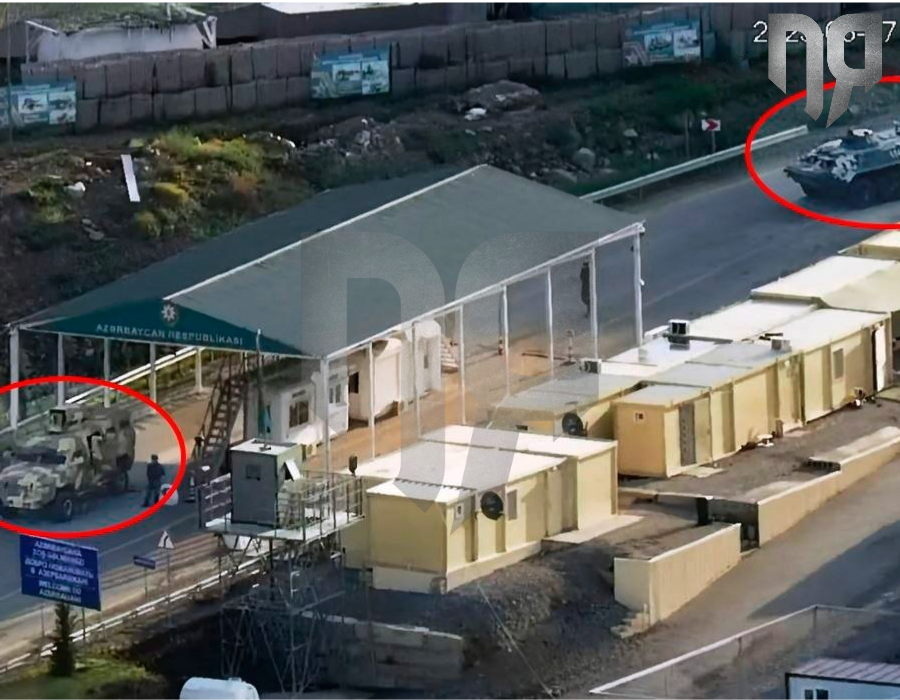 The new illegal Azeri checkpoint in the Lachin Corridor. A BTR-60 and a Turkish-made Otokar APV can be seen
The new illegal Azeri checkpoint in the Lachin Corridor. A BTR-60 and a Turkish-made Otokar APV can be seen
Since June 15, Azerbaijan has imposed a complete siege on the Lachin Corridor, prohibiting the movement of any people or goods (including food, medicine, hygiene items and fuel) in both directions even by the International Committee of the Red Cross and the personnel of the Russian peacekeeping force.
Through the use and threat of force, Azerbaijan continues to obstruct agricultural activities on approximately 10,000 hectares of land adjacent to the contact line, which is a significant part of the total cultivated land.
The European Court of Human Rights (last December) and the International Court of Justice in The Hague (in February) issued legally binding rulings to ensure the unimpeded movement of people, vehicles and goods in both directions. Both judicial bodies reaffirmed their rulings in July because Azerbaijan refused to implement these acts, gradually exacerbating the situation.
The suspension of all humanitarian supplies since June 15, alongside the use of limited domestic stocks, has exacerbated the humanitarian situation. In particular:
- The food shortage is exacerbated by the malnutrition of 95% of the population, considering that before the blockade, about 90% of all food consumed was imported from Armenia.
 The last medical supplies in Stepanakert
The last medical supplies in Stepanakert
- Due to the dwindling availability of fuel and other essential resources, almost all agricultural operations have stopped, only a part of the wheat harvest is done with great difficulty.
- Due to the complete interruption of supplies from Armenia, domestic traffic, as well as energy supply, other sectors of the economy have completely stopped, only some of the shops are partially working.
- Due to severe fuel shortages, internal public transport has stopped operating since July 25.
- The growing shortage of medicines, medical supplies and hygiene items, combined with the ban on transporting medical patients to Armenia, poses a growing threat to people’s lives and well-being.
- Daily power cuts and fuel shortages have severely affected the operation of medical equipment, leading to a reduction in the volume and quality of healthcare services.
- Due to the absence or critical shortage of medicines, malnutrition, stress, postponement of essential surgeries and examinations, compared to last July, the death rates from cardiovascular diseases have increased by 2.6 times and from cancer by 16%, necessary abortions have quadrupled, cases of fainting doubled and anemia in pregnant women has reached 90%.
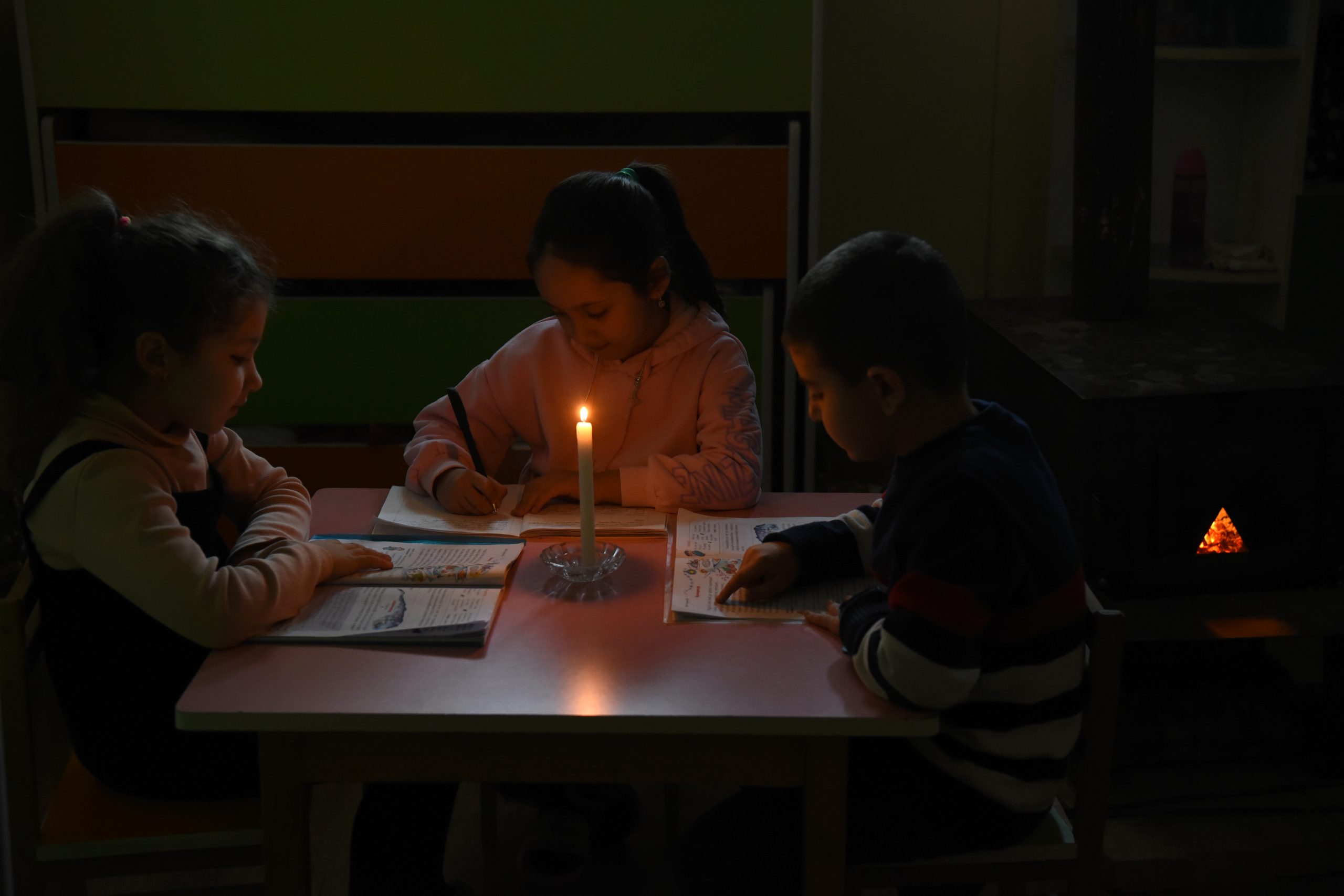 The children’s department of the “Arevik” medical association is struggling to face today’s challenges. The lack of fuel has made it very difficult to transport sick children from the districts of the Republic to Stepanakert. Consequently, they often arrive at medical units at an advanced stage of their disease.
The children’s department of the “Arevik” medical association is struggling to face today’s challenges. The lack of fuel has made it very difficult to transport sick children from the districts of the Republic to Stepanakert. Consequently, they often arrive at medical units at an advanced stage of their disease.
- Daily power cuts, fuel shortages and shortages of other essentials are causing major disruptions to water supply and telecommunications infrastructure in many residential areas.
- The total siege and interruptions in electricity and natural gas supplies have rendered over 17,000 people unemployed and deprived of essentials, representing over 90% of the private sector workforce.
The total siege of the Armenian population and its long-term isolation from the outside world, with the ultimate goal of violent subjugation and displacement of the Armenian element, sharply deepens the humanitarian crisis with obvious genocidal actions and intentions.
Azerbaijan continues to show willful disregard for its international obligations, repeatedly violating the provisions of the Tripartite Declaration of November 9, 2020, the decision of December 21, 2023 by the European Court of Human Rights, the orders issued by the International Court of Justice on February 22 and July 6, 2023, invitations from the UN Secretary-General, the UN High Commissioner for Human Rights, Amnesty International, Human Rights Watch, the Parliamentary Assembly of the Council of Europe, the European Parliament, UN experts as well as other international organizations and many states. Azerbaijan’s genocidal actions persist despite these demands and appeals.
Armenians in Artsakh need global assistance to end the blockade which has lasted for 265 days. The international community, with the exception of some European Republics, such as France, is not taking the right steps to stop Azerbaijan which is trying to exterminate the civilian population with inhumane practices.
Even the Republic of Armenia is unable to react and does not possess the military power to force Baku to lift the blockade. Armenia also faces a huge security problem, as the forces of the Azerbaijani Army have invaded its state borders for several months, and there are periodic violent clashes that lead to heavy casualties.
READ MORE
Russia | Cluster bombs hit residential area in Odessa
Images from Russia’s strike in the heart of Odessa, which hit the so-called “Harry Potter Castle”, a former politician’s mansion now…
France | Industries prioritize orders of anti-aircraft missiles
The Armed Forces Ministry of France has instructed industries involved in the production of Aster anti-aircraft and anti-ballistic…
HNDGS | Bilateral joint training between Greece and Poland – Photos
The bilateral joint training between the Armed Forces of Greece and Poland, in the wider area of Attica, was completed on Thursday…
Sielman | Contract for support of the HAWK anti-aircraft system
The US Department of Defence has awarded a $49.9 million contract modification to Greek company Sielman S.A. to provide diagnostic and…
Hellenic Entrepreneurs Association | Ideas & Positions for the Promotion of Greek Entrepreneurship
The members of the Hellenic Entrepreneurs Association (E.E.N.E.) participated in a roundtable discussion entitled “Ideas, Positions…
Ukraine | Increase in defence spending by 367 million euros for the acquisition of drones
Kiev is increasing spending by 15.5 billion hryvnias (367 million euros) to bolster Ukraine’s armed forces with drones, according to…
HMoND | The legislative initiative for HCDI is under consultation
The legislative initiative of the Ministry of National Defence, under the title: “Establishment of the Hellenic Center for Defence…
Russia | Cluster bombs hit residential area in Odessa
Images from Russia’s strike in the heart of Odessa, which hit the so-called “Harry Potter Castle”, a former politician’s mansion now…








